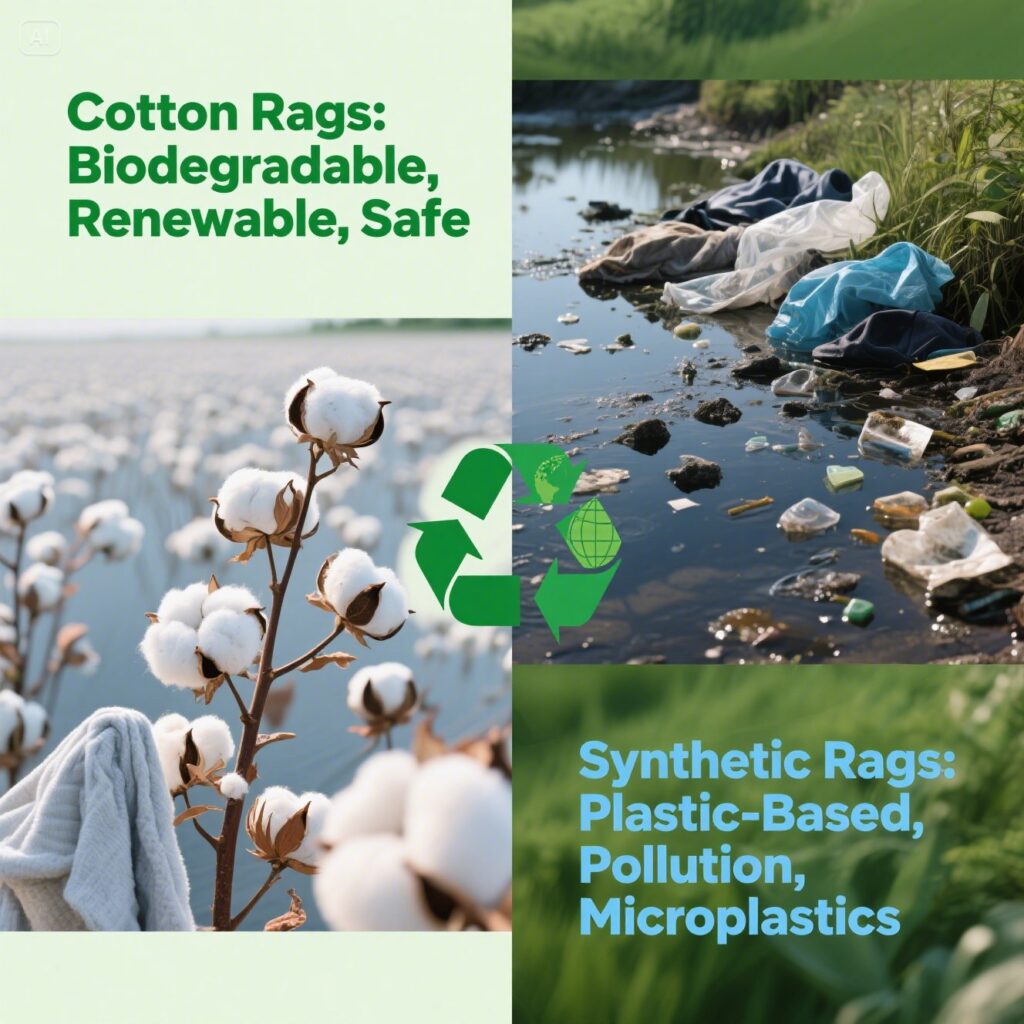Meta Description:
Explore why cotton rags are more eco friendly than synthetic ones biodegradable, reusable, and safer for the environment.
Introduction: Choosing the Greener Option
As sustainability becomes a global priority, the cleaning industry is shifting toward more environmentally conscious choices. Among the most debated topics is the selection between cotton rags and synthetic rags. While both serve similar purposes, their environmental impact is vastly different. Therefore, in this blog, we’ll break down the eco benefits of cotton rags versus synthetic rags. Additionally, we will explain why cotton remains the superior choice for a greener future. By understanding these differences, you can make more informed decisions that promote sustainability.
What Are Cotton and Synthetic Rags Made Of?
Cotton Rags A Natural Choice
Cotton manufacturers usually produce cotton rags from post-industrial waste or recycled clothing. They make these rags from natural cotton fibers that biodegrade and are sustainable. Since they source these fibers from renewable materials, the production causes less environmental damage.
Synthetic Rags A Petroleum-Based Product
By contrast, manufacturers typically produce synthetic rags from polyester, nylon, or acrylic all of which are plastic based. They derive these materials from fossil fuels, and unfortunately, these materials do not break down naturally, causing long term pollution.
Decomposition and Waste Impact
Cotton Breaks Down Naturally
When disposed of, cotton rags biodegrade within months without releasing toxins into the soil or water. This is one of the key reasons cotton is preferred in eco-conscious sectors.
Synthetic Rags Persist in Landfills
In comparison, synthetic rags may take up to 500 years to decompose. During this time, they may release harmful microplastics into the ecosystem, contaminating water and marine life.
Production and Energy Consumption
Cotton Uses Less Energy
Because people can repurpose cotton from pre-used textiles, the recycling process consumes less energy. The rise of mechanical and automated cotton rag recycling has minimized waste and significantly reduced energy usage.
Synthetic Requires High Energy and Emits Toxins
Manufacturers produce synthetic rags from scratch, often using high-temperature chemical processes, which result in more CO₂ emissions and a larger carbon footprint.
Microplastics and Environmental Risk
One of the most concerning issues with synthetic rags is the release of microplastics during washing. Researchers have found these particles in oceans, drinking water, and even human blood.
Meanwhile, cotton rags pose no such risk, making them a safer and more responsible choice, especially in industries like food service and healthcare.
Reusability and Lifespan
People know cotton rags for their high durability, and they can withstand multiple washes, which further reduces waste. Their absorbency and softness make them ideal for repeated use in commercial and industrial cleaning.
Although you can reuse synthetic rags, their fibers degrade more quickly, which leads to more frequent disposal.

Final Verdict Cotton Rags Are Environmentally Superior
Summary of Benefits
- Biodegradable and compostable
- Made from renewable sources
- Energy-efficient recycling
- No microplastic pollution
- Safer for both people and the planet
Conclusion: Make the Switch to Sustainability
In summary, cotton rags have proven to be significantly more eco-friendly than synthetic rags across every stage from production and usage to disposal. As global awareness around environmental issues continues to rise, businesses are encouraged to adopt greener alternatives. Choosing cotton rags over synthetic ones protects the planet and helps achieve long-term sustainability goals with confidence.
